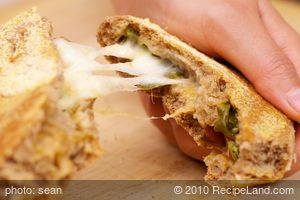This very easy to follow recipe helps you make a soft bread that will have everyone wanting another slice!
Ingredients
Directions
Make sure that all ingredients are at room temperature. Put all ingredients in bread pan in order listed. Yeast should be fresh. Store yeast in the refrigerator. Bringing it up to room temperature only takes a few minutes.
If you are making bread other than white, you may need to add gluten and/or lecithin to your dough. They are especially helpful when making whole wheat, rye or other heavier type breads by helping to improve the elasticity of the dough.
The key to using the auto-breadmaker is to have the correct proportion of flour to liquid. After the dough has kneaded for a few minutes in the breadmaker, look in and see if there is ONE ball of dough which is incorporating most of the flour from the sides of the pan. If it’s a ‘gooey mess', add 1 tablespoon flour until it makes ONE SOFT ball. If there are two or more balls, add 1 tablespoon water and see if it makes 1 ball. (You may have to go back and forth with this until you get it right.)
While it’s in its first knead (BEFORE it goes into the fermentation cycle), open the lid and touch the dough lightly. It should be in one soft ball. If your finger has sticky dough on it, add a tablespoon of flour. Let it knead a minute and touch it again and check to see if it’s still sticky. Keep adding a tablespoon at a time ONLY until it’s no longer sticky, Don’t OVERDO it! If it just makes a slight indentation and doesn’t look crusty, it’s probably about right. If it feels too dry or is in two or more DRY-looking balls (not a sticky mass), add a tablespoon at a time of WARM water. DO NOT ADD TOO MUCH LIQUID. If you add too much liquid in proportion to the flour, the dough may rise too much and may overflow. If you look in and see that the dough is threatening to rise up over the top of the bread pan, don’t panic, poke it a few times with a toothpick, skewer, fork, etc. until it deflates a little.
Comments



